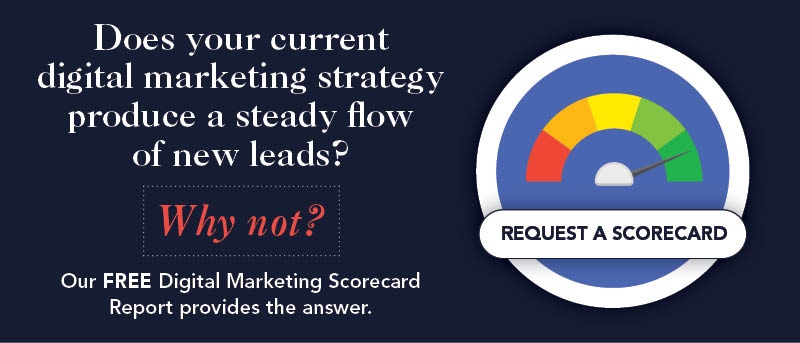How Does Marketing Insanity Impact Financial Advisor Firms
Albert Einstein is widely credited with saying, “The definition of insanity is doing the same thing over and over again, but expecting different results.”
Does this well-known definition of insanity apply to the marketing practices of your firm and if they do what can you do about it?
LOOKING TO GROW YOUR AUM IN 2020? CONTACT PALADIN DIGITAL MARKETING TO SEE HOW WE CAN HELP.
New Year Resolution
Does your firm start each year with a New Year’s resolution to add a certain number of new clients and at the end of each year you have failed to achieve this goal? Then at the start of the next new year you have a new goal, but you are using the same marketing that has already failed you.
All too often this is a reality for smaller financial advisory firms that do not have a winning marketing strategy, resources, or budgets.
Organic Growth
This article is not about AUM growth. Every RIA in America has been experiencing positive growth due to the performance of the stock market.
This article is about organic growth that produces net increases in your numbers of clients.
Passive Growth
There are three sources of passive work that “may not require a marketing strategy”:
- Market appreciation
- Reinvested income
- New money from current clients
We say “may not require a marketing strategy” because you may have a strategy for soliciting new assets from current clients.
The problem with passive growth is it can stop or reverse itself when the securities markets produce negative rates of return. A safer strategy is to combine passive growth with organic growth.
Referral Growth
Every financial advisor firm should have a strategy for asking current clients to refer them to friends, family, and associates.
You will need an effective marketing strategy because many clients are reluctant to make referrals when there is nothing in it for them. And, there is always downside risk if the relationship between you and the referral does not work out. This is why you need a marketing strategy – how do you make current clients feel safe, so they are willing to make referrals?
There is a second version of referral marketing that is based on building a network of Centers of Influence. These COIs could be CPAs, who do not provide planning advice, estate planning attorneys, and other types of professionals who can influence investor behavior.
Marketing Goals
You may have a number of goals for your firm, but the one that we focus on in this article is your client count. That is to say we are not focused on your number of accounts that vary by client. We are focused on the number of client relationships that are served by your firm.
How many clients did your firm have at the beginning of the year and how many clients did your firm want to serve at the end of the year?
Organic growth should be based on a net number. Every advisor in America will lose a few clients each year for reasons they control, and in other cases, do not control. For example, clients pass away, relocate, and move assets to other advisors.
The bottom-line is your goal could be to increase your number of clients by 15% net of any losses you may incur during the year.
A New Marketing Strategy
Notwithstanding the impact of referrals from clients, friends, family, and COIs you should still have a marketing strategy for adding new clients that are not referrals.
You may need a new strategy if your current one is not producing adequate organic growth. You do not want to fall victim to Einstein’s definition of insanity.
In modern times there are two primary strategies that you could implement. One is Outbound Marketing. The other is Inbound Marketing.
Outbound Marketing
Financial advisors have used Outbound Marketing tactics for decades to initiate contact with investors. The most frequently used tactics were cold calling and direct mail/email.
Unfortunately, most investors did want the contact. Consequently, Outbound Marketing tactics are used by fewer and fewer advisors who did not want to commit time and money to marketing strategies that have rejection rates approaching 100%.
The demise of Outbound Marketing was accelerated by Caller ID and spam filters that investors used to avoid these types of solicitations.
Inbound Marketing
The alternative to Outbound Marketing is Inbound Marketing.
Whereas Outbound Marketing means advisors initiate contact with investors, Inbound Marketing means investors initiate contact with advisors.
The Internet makes this form of marketing possible for firms that own their brands and websites.
The three keys to Inbound Marketing are:
- Internet visibility so investors can find you
- Website traffic
- A website that can convert traffic into qualified leads
Huge Payoffs
There are huge payoffs if you can develop and execute a marketing strategy that produces a steady flow of new clients to your firm.
Increased revenue and income are just two of the payoffs.
More clients mean you are less susceptible to market downturns.
Your firm’s valuation will increase when you have a steady flow of new clients.
Increases in clients, assets, and revenue create a critical mass that will enable you add new marketing resources that will accelerate the growth of your firm.


